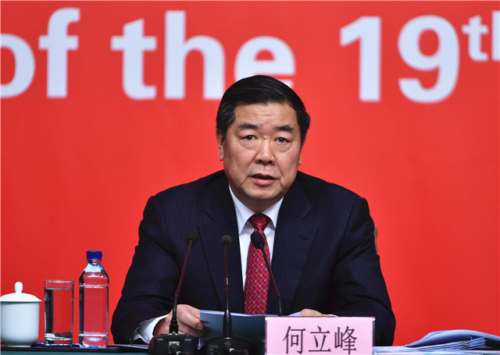China ramps up its efforts to shape a multipolar world
Beijing's recent mediation of global conflicts is part of a broader strategy to chip away at U.S. hegemony. It just might work.

China’s recent achievement in brokering rapprochement between Saudi Arabia and Iran has captivated the attention of pundits and policymakers worldwide. Now, China has indicated that it wishes to act as peacemaker between Russia and Ukraine.
These developments reflect a trend that has seen a stark rise in China’s global conflict mediation efforts since Xí Jìnpíng 习近平 assumed power in 2012, raising a pivotal question: what motivates Beijing to take on this role of peacemaker?
From material interests to multipolarity
There are myriad interests driving China’s desire to increasingly involve itself in resolving international conflicts, from securing its economic interests to protecting its citizens abroad and sometimes on national security grounds.
These are not trivial matters: When Iranian-backed Houthi rebels launched drone attacks on Saudi Aramco facilities in September 2019, the price of Brent crude spiked by almost 20%, and China found itself paying $97 million more every day for oil. Meanwhile, hundreds of thousands of Chinese people live in the Middle East today, mostly in the Gulf region.
China has traditionally been reluctant to involve itself militarily beyond its near abroad, relying on U.S. forces to protect its interests in far-flung regions like the Middle East and North Africa. However, with tensions between the two great powers escalating, China’s leadership has come to view its reliance on the U.S. security umbrella as a vulnerability. Accordingly, Beijing has found new impetus to ramp up efforts to stabilize these regions.
Yet there is another, perhaps less intuitive reason underlying China’s desire to act as a peacemaker: Beijing seeks to catalyze the emergence of a more multipolar international system, one in which China is not beholden to the American-dominated institutions that form the backbone of the postwar system.
And the fact is, the world’s current violent conflicts present China with an opportunity to demonstrate its diplomatic prowess and ability to navigate complex geopolitical terrain. More importantly, Beijing wants to signal to the world that it is a serious player in the international arena, capable of solving problems and contributing to global peace and stability.
Commenting on the prospects of China mediating the Russia-Ukraine war, Wang Jiangyu, a law professor at City University of Hong Kong, told the media, “Xi would want to be seen on the global stage as a statesman whose influence at least equals that of the U.S. leader.”
It is no coincidence that China has typically sought to involve itself in conflicts gaining widespread media coverage while largely restricting its involvement to high-profile actions.
Where other actors have traditionally employed a “bottom-up” approach to mediation, China has adopted a “top-down” strategy. Engaging in high-level meetings between senior officials in its Ministry of Foreign Affairs and target parties, high-profile peace conferences, shuttle diplomacy, and attempts to situate conflict resolution within multilateral institutions are all emblematic of this approach. This method is instrumental in Beijing’s efforts to draw political capital away from the U.S. in the international system and project the image of a responsible great power.
The principle of “peace through development” is one such practice that Beijing has long been trying to establish as a global norm, a stark contrast to the Western-inspired “liberal peace” model that has dominated international affairs and conflict mediation since its resurgence in the 1980s. Other concepts include “a community of common destiny for mankind” and “a new type of great power relations,” both of which happen to be references to the multipolar world order China is striving to advance. Other initiatives that aim to advance this agenda include the Belt and Road Initiative, the creation of parallel institutions like the Asia Infrastructure Investment Bank, and the expansion of Chinese-led multilateral organizations like the Shanghai Cooperation Organization.
As Yin He, Associate Professor at the China Peacekeeping Police Training Center, explains: “A rising power always promotes a zeitgeist: the United Kingdom promoted free trade and the United States promotes freedom and democracy.” Accordingly, an increasingly powerful China now seeks to promote its own flavor of governance.
A multifaceted strategy
Notably, the various tools that Beijing leverages to shape a world more favorable to Chinese interests and aspirations operate in concert.
For example, in February 2023, the Chinese Foreign Ministry released its concept paper for a “Global Security Initiative” (GSI), based on a proposal last April by President Xi that outlines the country’s proposed solution to international security challenges. Although the initiative remains somewhat nebulous, the new Chinese security agenda differs vastly from that of Western powers in both its principles and practices.
Shortly after the announcement of the Saudi-Iranian deal, Chinese state-run media outlets and scholars alike took the opportunity to praise the development as a triumph for the GSI, a clear attempt to add legitimacy to the newly proposed security framework.
Likewise, Beijing’s proposal to implement “a new security architecture in the Middle East,” which features prominently in the GSI concept paper, builds upon China’s historical support for a settlement of the Israeli-Palestinian dispute; its prominent role in the Iran nuclear negotiations; and its involvement in the Syrian civil war, however marginal.
China’s Global Development Initiative, introduced around the same time as the GSI, has similarly found itself featured in official statements and promoted in multilateral fora. It won’t be long before Xi’s recently announced Global Civilizations Initiative follows suit.
Meanwhile, the SCO was born from the “Shanghai Five” forum, which was created in response to the Afghan civil war. During a July 2021 SCO summit in Tajikistan, its eight permanent members — China, India, Kazakhstan, Kyrgyzstan, Pakistan, Russia, Tajikistan, and Uzbekistan — committed to building consensus and combining efforts to find a solution to the predicament in Afghanistan that benefits both Kabul and its neighboring countries. That same year, state-controlled China Daily published a piece with a rather telling title: “SCO can help China build a multi-polar world.”
To that end, China has been eager to expand the organization. At the 2022 Dushanbe Summit, Iran became the SCO’s ninth member state while Saudi Arabia, Egypt, and Qatar were admitted as dialogue partners. The United Arab Emirates, Bahrain, Kuwait, the Maldives, and Myanmar have all since applied to join the SCO as dialogue partners. And it’s not just the SCO. In June 2022, China indicated that it also wishes to expand BRICS, a mechanism including Brazil, Russia, India, China, and South Africa that “aims to promote peace, security, development and cooperation” and establish “a more equitable and fair world” — meaning, more multipolar.
The BRI is not absent from this equation. The multi-trillion dollar global mega-infrastructure project affords China significant economic leverage to induce partner countries to accommodate Beijing’s interests and embrace its initiatives. Asia Times explains, “China’s footprint in trade and especially technology has grown enormously in Western Asia, allowing Beijing to turn its gradual accumulation of soft power into an unprecedented diplomatic coup.”
By strengthening its economic, diplomatic, institutional, and normative power, China is gradually chipping away at U.S. hegemony while creating counterweights to Washington’s efforts to contain a rising China.
Historical baggage
To be clear, China’s desire to advance a multipolar world order did not emerge in response to the current tensions with Washington. Instead, this aspiration can be traced back to its historical experience of being subjugated by colonial powers during the so-called “century of humiliation” (1839-1949): a time when China was forced to accept unequal treaties with foreign powers and suffered from territorial loss, economic exploitation, and political domination. This experience left a lasting impression on China’s leaders, who view the current international system as unfairly favoring America and the West.
Even during the Cold War, then-Chinese Premier Zhōu Ēnlái 周恩来 argued that multipolarity would provide a more stable and equitable balance of power than a bipolar world order, which the United States and the Soviet Union dominated. In the years since Mao’s death in 1976, the dichotomy has since moved from multipolarity vs bipolarity to multipolarity vs unipolarity, the implication being that the United States should not be able to dictate the terms of the international order.
It’s not that China wishes to supplant the U.S. and entirely upend the current international system. Rather, China seeks to achieve geostrategic parity with America, enhance its freedom to maneuver, and exert greater influence within the current system. In a multipolar world, power would be distributed more evenly among countries, meaning China would have more opportunities to project power globally and advance its interests at home and abroad.
Within Chinese foreign policy, multipolarity is thus less an analytical framework for examining relations between countries than an aspirational teleology defined by China’s relationship with dominant powers.
A revanchist friend indeed
Notably, China happens to share its revanchist ambitions with another major power, Russia.
But if the hope was that Xi Jinping’s recent visit to Moscow to meet with Vladimir Putin would prioritize efforts to end Russia’s war on Ukraine, a careful analysis of the joint statement issued by the two leaders after their discussions may have left some feeling disappointed.
According to the statement, the Sino-Russian relationship “has the nature of non-alignment, non-confrontation, and non-targeting of third countries.” Rather than proposing a tangible solution to the Ukraine crisis, the statement asserted that “the formation of a multipolar international pattern is accelerating,” acknowledging that “there are increasing numbers of regional powers that are strong and determined to defend their legitimate rights and interests” and affirmed that China and Russia would work together to “advance the multi-polarization of the world.”
Meanwhile, China seems to want the world to think that its mediation efforts are less self-serving and more about goodwill. In a press conference following the Saudi-Iranian deal, China’s Foreign Ministry Spokesperson Wāng Wénbīn 汪文斌 described China as “a good friend of Middle East countries,” adding that “China does not have selfish interests and does not seek to put up exclusive blocs in the region.”
While the latter may or may not be true, one does not need to subscribe to the realist school of thought to acknowledge that China’s efforts to mediate conflicts are not just about altruism. Ultimately, all nations foreign policy decisions are shaped by their strategic interests. China is no exception.






